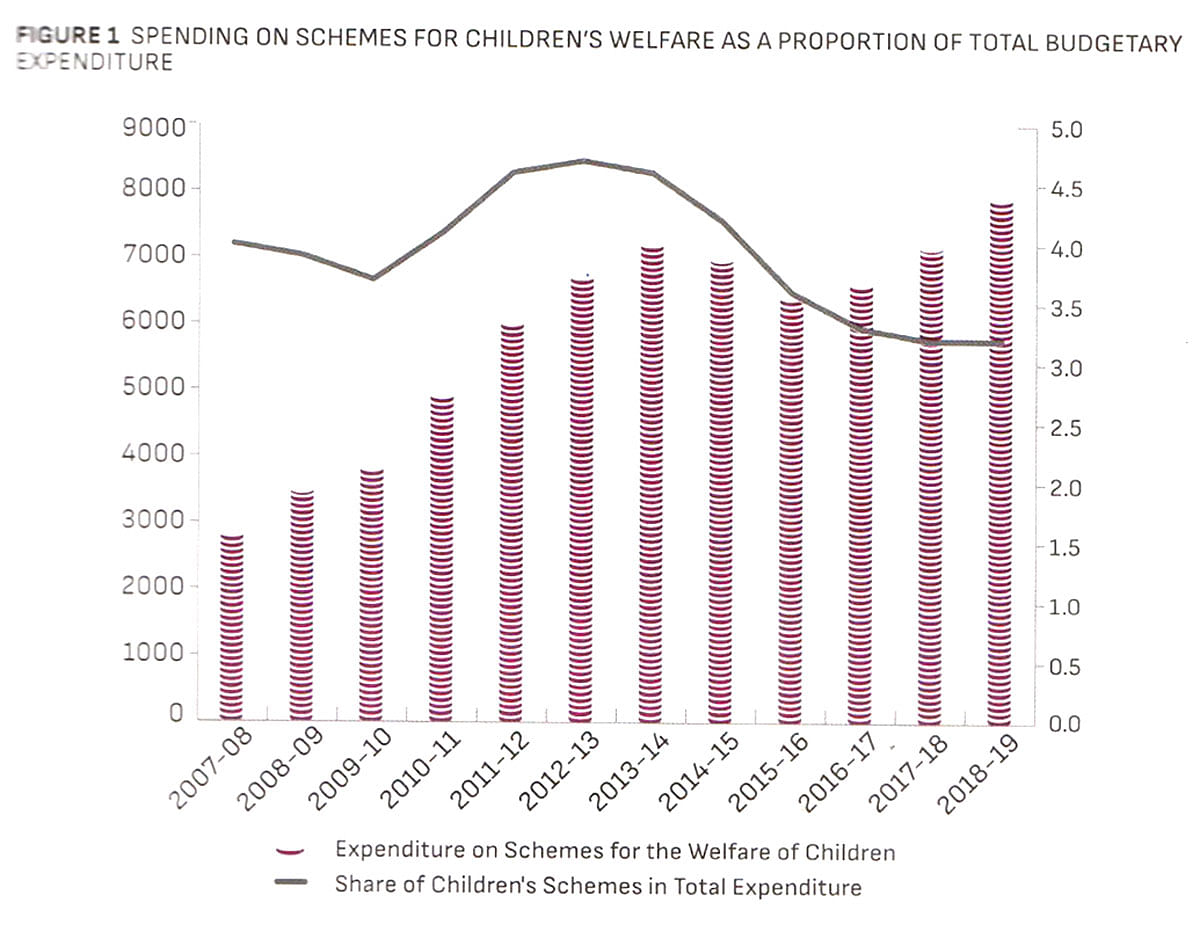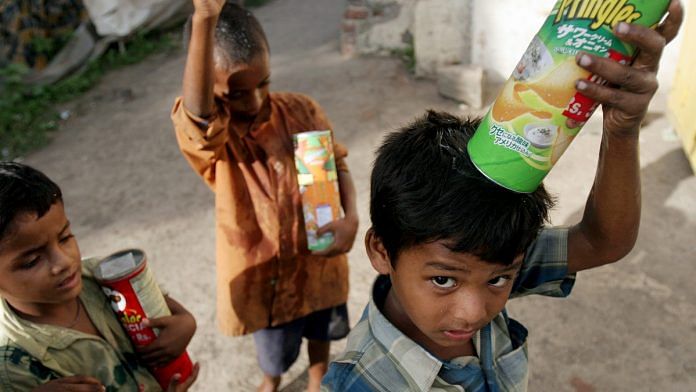New Delhi: In the last five years, government spending on children’s welfare schemes has seen a sharp decline in proportion to India’s overall budget, according to a paper by economist Biswajit Dhar published by a leading child rights organisation, HAQ: Centre for Child Rights.
The paper is part of a compilation titled ‘India’s Children Continue To Challenge Our Conscience’, which was released Wednesday and consists of 16 papers.
Dhar’s paper, titled ‘Public financing and child rights’, sheds light on how the government spent just 3 per cent of the Union budget on children’s schemes in 2018-19, compared to 5 per cent in 2012-13, even while the overall budget amount has continued to increase.

“These numbers show that in the overall priorities of the central government, schemes for implementing child rights have been taking the back-seat from 2013-14, and especially during the past 5 years,” the paper states.
Also read: Why Indian parents have returned 278 of 6,650 adopted children in 2017-19
‘Reflects priorities of govt’
Dhar said though there has been an rise in the absolute expenditure on children welfare schemes between 2007-08 and 2018-19, it is not commensurate with the overall budget increase.
“On the contrary, the share has decreased. This shows the priorities of the government,” Dhar told ThePrint.
The paper further argues that the departments which did require an increase in expenditure, such as health and education, haven’t seen a substantial increase.
“Expenditure on some of the more important areas that contribute to the development of children remained well below the requirements of the country. The schemes under the Ministry of Health and Family Welfare did not increase commensurate with the state of the health of children in India,” the paper states.
Dhar’s paper takes the expenditure figures as a proxy for the “commitment that the government has made to the fulfilment of child rights as a party to the 1989 Convention on Rights of the Child”.
‘Far cry from Kothari Commission target’
The 1966 education commission headed by D.S. Kothari had benchmarked the spending on education at 6 per cent of the country’s Gross National Product.
However, the paper cites the Economic Survey of 2017-18 as saying the government’s spending on education has slumped from 3.1 per cent of the Gross Domestic Product in 2013-14 to 2.6 per cent in 2016-17.
The paper says this is a “far cry from the Kothari Commission’s target of 6 per cent”.
It recommends that there must be a targeted annual level of spending, as a share of GDP, on children welfare schemes which the government must commit.
Also read: Number of stunted children in India fell 30% in a decade, but it’s slow progress



